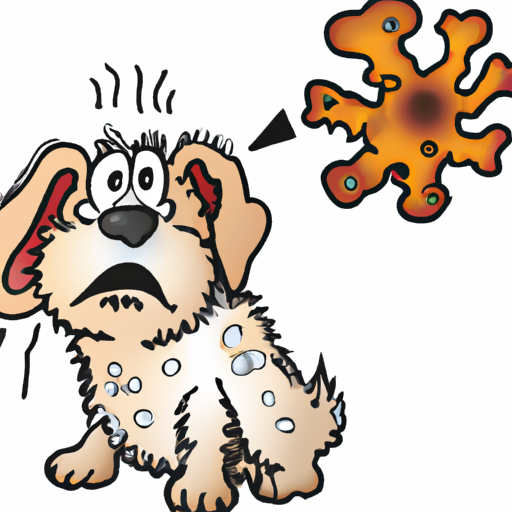“`
What Causes Yeast Ear Infections in Dogs?
As a caregiver, your heart likely skips a beat at the first sign of discomfort in your dog. This piece is aimed at helping you better understand yeast ear infections in dogs, what causes them, and how to prevent them.
1. Understanding Yeast Ear Infections
Yeast, specifically Candida, is a type of fungus that is normally present on your dog’s skin and ears without causing any issues. However, when the conditions are right, this fungus can overgrow and cause an infection. This typically occurs when the ear environment changes due to factors such as allergies, hormonal changes, or moisture.
2. Common Causes of Yeast Ear Infections
There are several factors that can cause yeast ear infections in dogs. Let’s explore them:
-
Allergies: Just like humans, dogs can have allergies too. These allergies can be to certain foods, environmental factors like pollen, or specific materials like certain fabrics. These allergies can disrupt the normal balance in the ear, leading to a yeast infection.
-
Hormonal Changes: Changes in your dog’s hormone levels can also impact the balance of yeast and bacteria in the ear. This is particularly common in dogs with endocrine diseases such as hypothyroidism or Cushing’s disease.
-
Moisture: Yeast thrives in warm, moist environments. If your dog loves to swim or gets their ears wet often, it could create the perfect environment for yeast overgrowth.
3. Recognizing Symptoms
It’s crucial to recognize the signs of a yeast ear infection early. Here’s what to watch out for:
- Constant shaking or tilting of the head
- Scratching at the ears
- Redness and swelling in the ear canal
- Unusual odor coming from the ear
- Discharge from the ear
4. Treatment Options
If you suspect your dog has a yeast ear infection, it’s crucial to get them to a vet as soon as possible. Treatment typically includes:
- Cleaning the ear to remove any buildup
- Prescribing antifungal medication
- Addressing any underlying issues that may have contributed to the infection
5. Preventing Yeast Ear Infections
Prevention is always better than cure. Here are some steps you can take to prevent yeast ear infections:
- Regularly clean your dog’s ears
- Keep your dog’s ears dry
- Regular vet check-ups to catch any early signs of infection
Frequently Asked Questions
Q: Can I treat a yeast ear infection at home?
A: While mild infections may be treated at home, it’s always best to consult a vet to get the correct diagnosis and treatment.
Q: How can I tell if my dog has an ear infection?
A: Common signs include head shaking, ear scratching, redness, swelling, odor, and discharge.
Q: Can yeast ear infections be prevented?
A: Yes, by regular ear cleaning, keeping the ears dry, and regular vet check-ups.
“`



